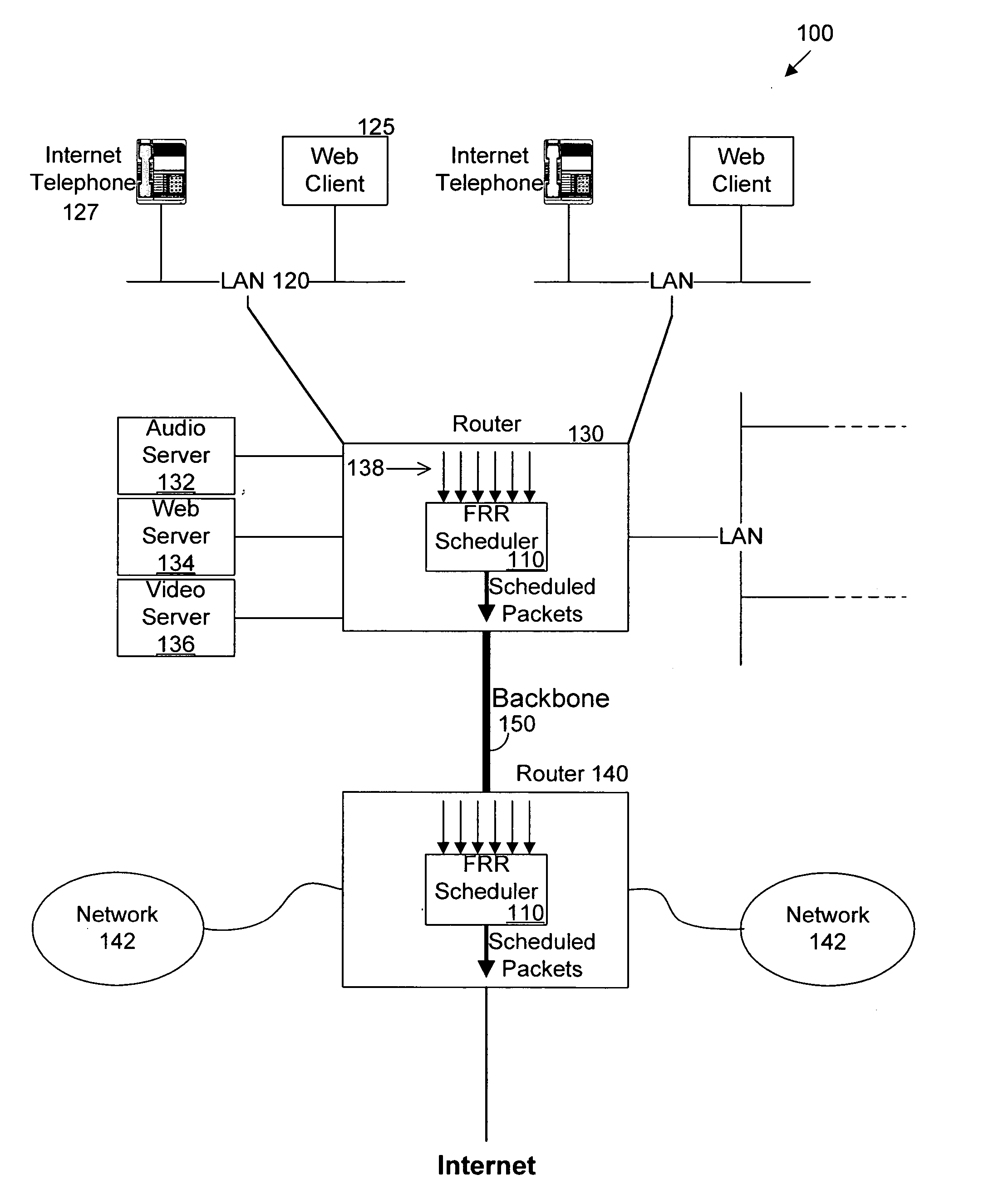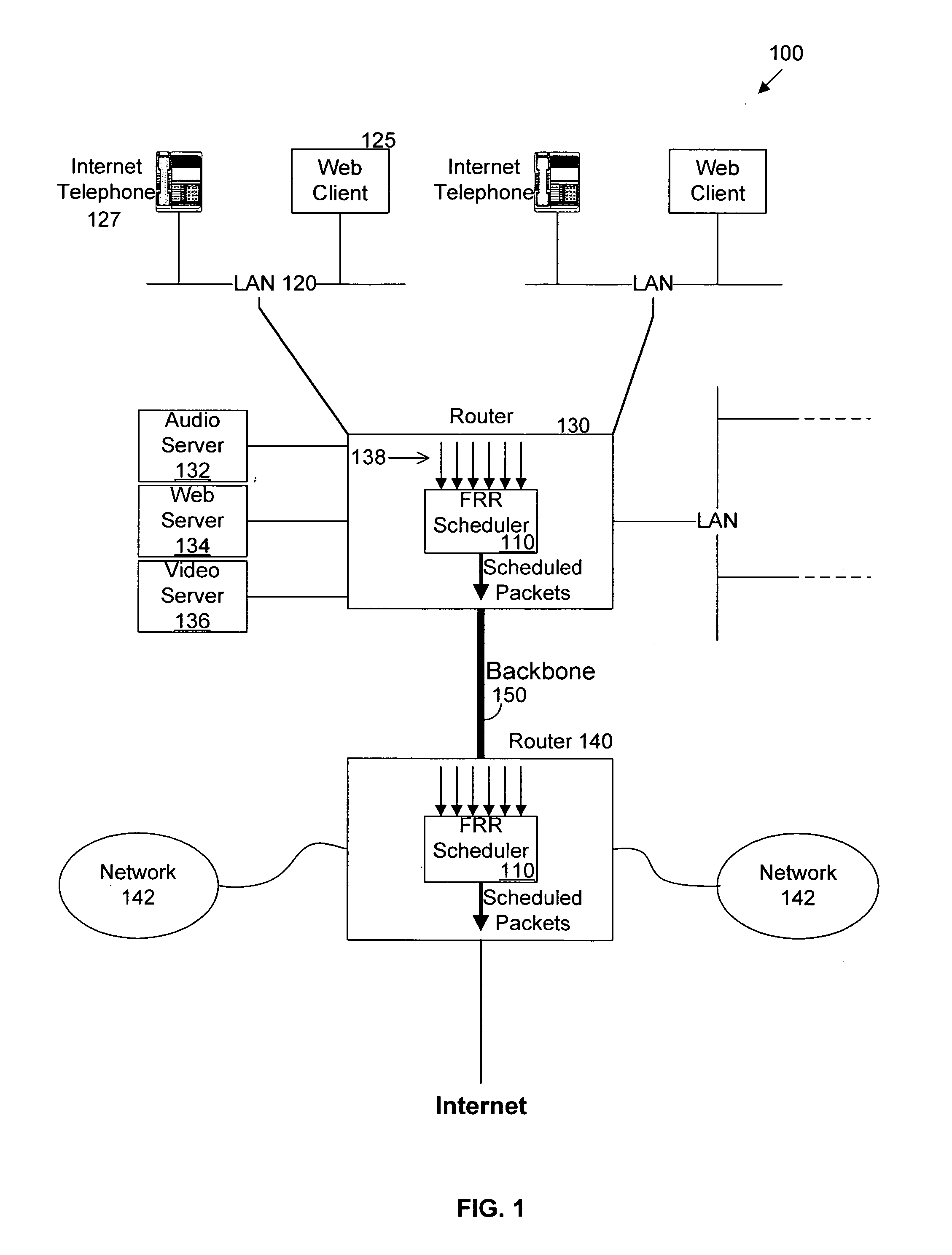Fair round robin scheduler for network systems
a network system and scheduler technology, applied in the field of data packet scheduling, can solve the problems of high complexity, o(log n), and packet schedulers should incur a bounded delay for each packet, and achieve good bounded delay and fairness properties
- Summary
- Abstract
- Description
- Claims
- Application Information
AI Technical Summary
Benefits of technology
Problems solved by technology
Method used
Image
Examples
Embodiment Construction
[0022] In the following detailed description, reference is made to the accompanying drawings, which form a part hereof, and which is shown by way of illustration of specific embodiments in which the invention may be practiced. These embodiments are described in sufficient detail to enable those skilled in the art to practice the invention, and it is to be understood that other embodiments may be utilized, and that structural, logical and programming changes may be made without departing from the spirit and scope of the present invention.
Naming Conventions
[0023] The symbol N refers to a number of flows in a system.
[0024] The symbol n refers to a number of classes in a system.
[0025] The symbol R refers to a total link bandwidth for a router output.
[0026] The symbol ri refers to an assured bandwidth for a flow fi.
[0027] The equation wi=riR
refers to a normalized weight associated with the flow fi.
[0028] The symbol LM refers to a maximum data packet size.
[0029] The symbol Si,s...
PUM
 Login to View More
Login to View More Abstract
Description
Claims
Application Information
 Login to View More
Login to View More - R&D
- Intellectual Property
- Life Sciences
- Materials
- Tech Scout
- Unparalleled Data Quality
- Higher Quality Content
- 60% Fewer Hallucinations
Browse by: Latest US Patents, China's latest patents, Technical Efficacy Thesaurus, Application Domain, Technology Topic, Popular Technical Reports.
© 2025 PatSnap. All rights reserved.Legal|Privacy policy|Modern Slavery Act Transparency Statement|Sitemap|About US| Contact US: help@patsnap.com



